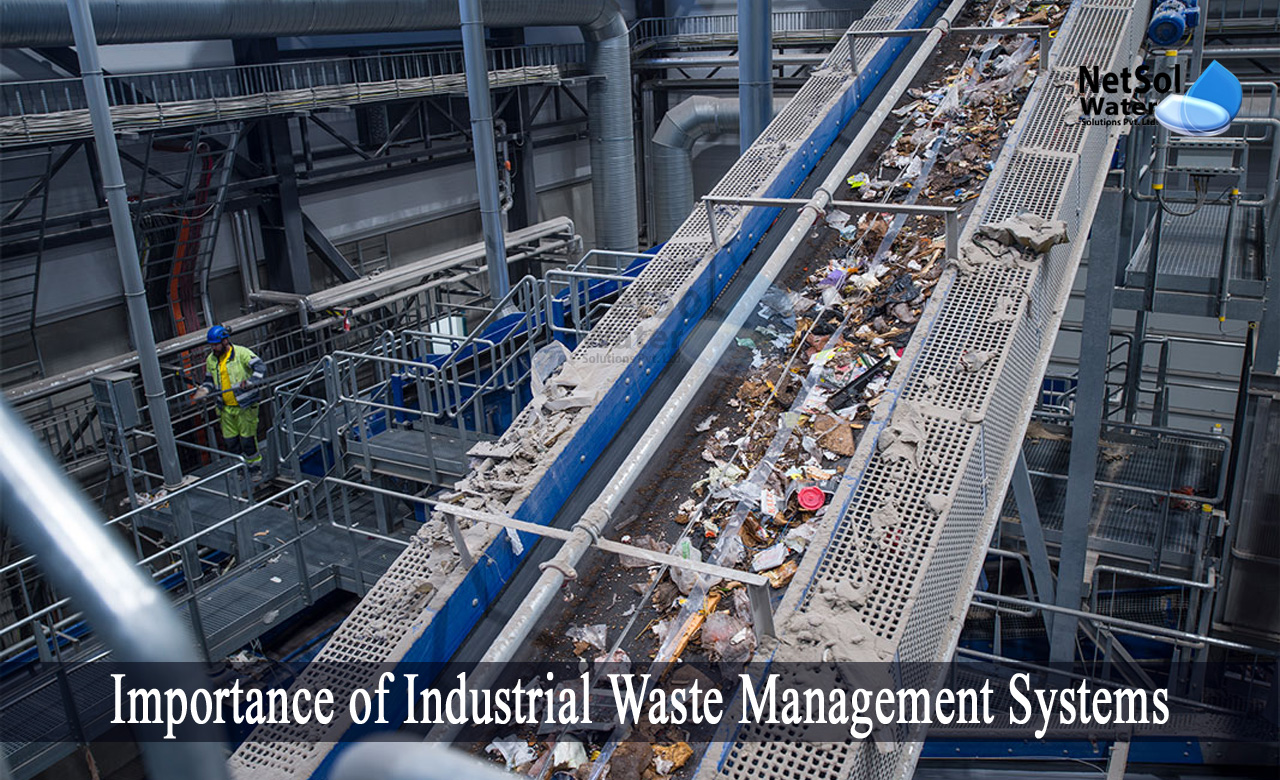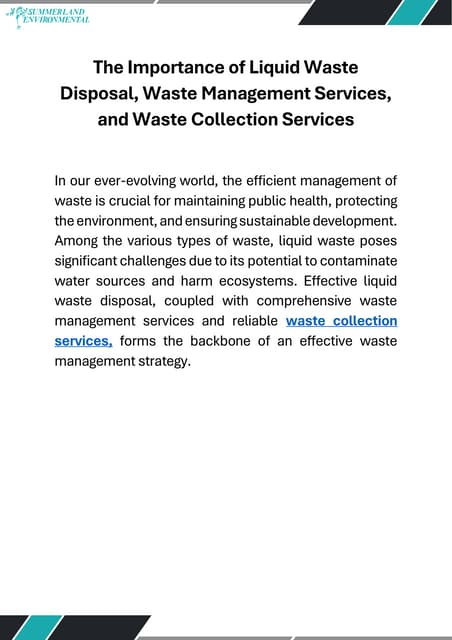Facts About Reclaim Waste Revealed
Facts About Reclaim Waste Revealed
Blog Article
The Of Reclaim Waste
Table of ContentsReclaim Waste Fundamentals ExplainedGetting The Reclaim Waste To WorkThe Facts About Reclaim Waste UncoveredExamine This Report about Reclaim WasteThe Buzz on Reclaim Waste
Check out the kinds, occurrences, and forms of liquid waste. Residential sewer waste refers to the waste and items from a residential septic system. This type of waste is created by people in residences, schools, and other structures. This only includes septic systems that have a drainpipe field. The correct monitoring and disposal of domestic sewer waste call for fluid waste to be transferred to a sewer treatment plant where the proper approaches and equipment are used to purify and throw away waste.
Business waste commonly consists of prospective risks, such as combustible products or a mix of fluid and solid waste products, and calls for an advanced and comprehensive disposal procedure. The disposal of commercial waste normally involves the purification of waste prior to transportation to guarantee secure and proper disposal. Industrial waste is created from results and overflow of industrial processes and manufacturing.
This sort of waste can not use the very same sewage management transportation or procedures as septic or business fluids. The commercial waste monitoring procedure calls for the examination and screening of fluid waste prior to it undergoes the disposal process (liquid waste disposal). Drainage waste is the fluid waste that originates from drainage and excess stormwater in very populated areas or cities
Runoff waste can cause contamination and flooding if not dealt with correctly. Discover more about sewer cleaning and waste management. Guaranteeing proper waste administration can avoid catastrophes and decrease environmental harm. Both people in household settings and professionals in business or production markets can benefit from recognizing the procedures and policies of fluid waste monitoring.
The 7-Minute Rule for Reclaim Waste
Get in touch with PROS Services today to discover our waste management and disposal solutions and the correct methods to look after the liquid waste you create.
(https://www.easel.ly/browserEasel/14532007)This so-called 'wastewater' is not only a crucial resource however, after therapy, will be launched to our land, rivers or the ocean. Made use of water from commodes, showers, baths, cooking area sinks, laundries and commercial processes is understood as wastewater.

water made use of to cool equipment or clean plant and tools). Stormwater, a form of wastewater, is drainage that streams from farming and urban areas such as roofing systems, parks, gardens, roads, paths and gutters right into stormwater drains, after rainfall. Stormwater flows unattended directly to local creeks or rivers, ultimately getting to the sea.
Reclaim Waste Can Be Fun For Everyone
In Queensland, many wastewater is dealt with at sewer therapy plants. Wastewater is moved from residential or industrial websites via a system of sewage systems and pump stations, known as sewerage reticulation, to a sewage therapy plant.
The Division of Natural Resources suggests city governments about handling, operating and keeping sewage systems and treatment plants. In unsewered areas, local governments might need homeowners to set up private or home sewer treatment systems to treat residential wastewater from bathrooms, cooking areas, bathrooms and washings. The Department of Natural Resources authorises making use of house systems when they are confirmed to be reliable.
The majority of stormwater gets no treatment. In some brand-new communities, therapy of some stormwater to remove clutter, sand and crushed rock has started utilizing gross contaminant traps. Wastewater therapy occurs in 4 stages: Gets rid of solid matter. Larger solids, such as plastics and various other items incorrectly discharged to sewage systems, are eliminated when wastewater is travelled through displays.
Wastewater after that moves into big containers where solids clear up and are gotten rid of as sludge. Grease and residue are skimmed from the surface. Uses small living microorganisms understands as micro-organisms to damage down and remove continuing to be liquified wastes and great particles. Micro-organisms and wastes are incorporated in the sludge. Removes nitrogen and phosphorus nutrients that might create algal blooms in our rivers and intimidate aquatic life.
Our Reclaim Waste Diaries
Nutrient elimination is not available at all sewer therapy plants due to the fact that it calls for pricey specialized tools. Clear liquid effluent my website created after therapy may still include disease-causing micro-organisms - liquid waste disposal.

Many wastewater moves into the sewage system. Under the Act, regional federal governments administer authorizations and licences for eco relevant tasks (ERAs) including wastewater launches that might have a neighborhood impact.
Not known Incorrect Statements About Reclaim Waste
Or else, examples are considered research laboratory analysis. Usually numerous tests are needed to establish the degrees of each of the various contaminants such as oils, hefty metals and pesticides in water. Monitoring offers accurate info concerning water top quality and can confirm that licence conditions are being fulfilled. The info obtained through tracking offers the basis for making water quality decisions.
Report this page